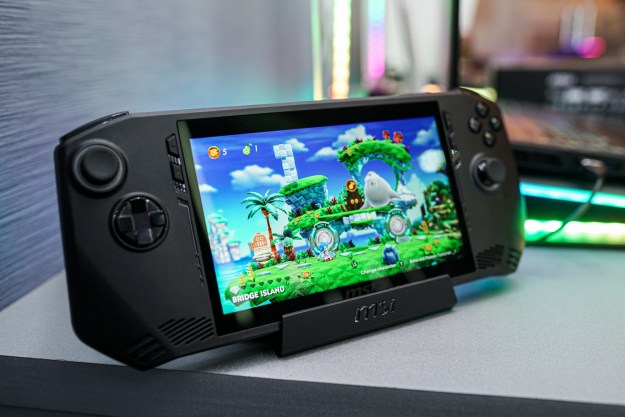The One Laptop Per Child project is getting back to its roots. A few years ago, the company revealed plans to release a tablet and ride the wave of popularity generated by slates like the iPad. However, it was clear from the mock-up images that the project’s goals were awfully lofty, especially for a device meant to be ultra affordable and destined for kids in developing countries. The working prototype, the XO 3.0, was a little more down to earth yet never made it to production. This year’s CES, however, brought both a dedicated tablet and a convertible tablet PC to the table. Though the XO 4.0 Touch convertible is a bit of a reversal as it goes back to an older design, the veer into tablets wasn’t a complete waste of time. The XO 4.0 Touch sports a touchscreen as well as faster internal specs.
Though the design looks a bit chunky, the XO 4.0 Touch is quite light and perfect for small people. It even has a handle for easy transport between classes, home, and school. It’s also quite rugged, so even if kids aren’t as careful or gentle with it as they should be, the laptop will continue to function. The hinge that makes changing from laptop to tablet mode is sturdy and looks like it will last for lots of twists.
Both the internal and external design elements prioritize power efficiency since the XO 4.0 Touch is often destined for areas where access to electricity is sporadic. For instance, the 7.5-inch display utilizes Pixel Qi technology, which greatly minimizes energy usage. The screen isn’t particularly vibrant, but it’s crisp and works in the sun. For the touch functionality, OLPC turned to a technology currently in use on popular eReaders like the Nook and Kindle: infrared. This uses less energy than the touchscreens on consumer laptops and allows for the use of a stylus without an active digitizer.
Inside, Marvell’s dual-core, 1.2GHz PXA2128 processor provides plenty of power coupled with high efficiency. It won’t break any records for speed, but is robust enough to run Linux quite well. Just as with previous XO laptops, the XO 4.0 Touch runs Fedora Linux with a customized UI designed to appeal to kids. The focus of the software is education and a peek into the offerings reveals apps and games that teach everything from math to programming to reading skills.
OLPC plans to start shipping the XO 4.0 Touch in March. Right now there are no plans to sell it via retail channels. The company will instead focus on governments.


